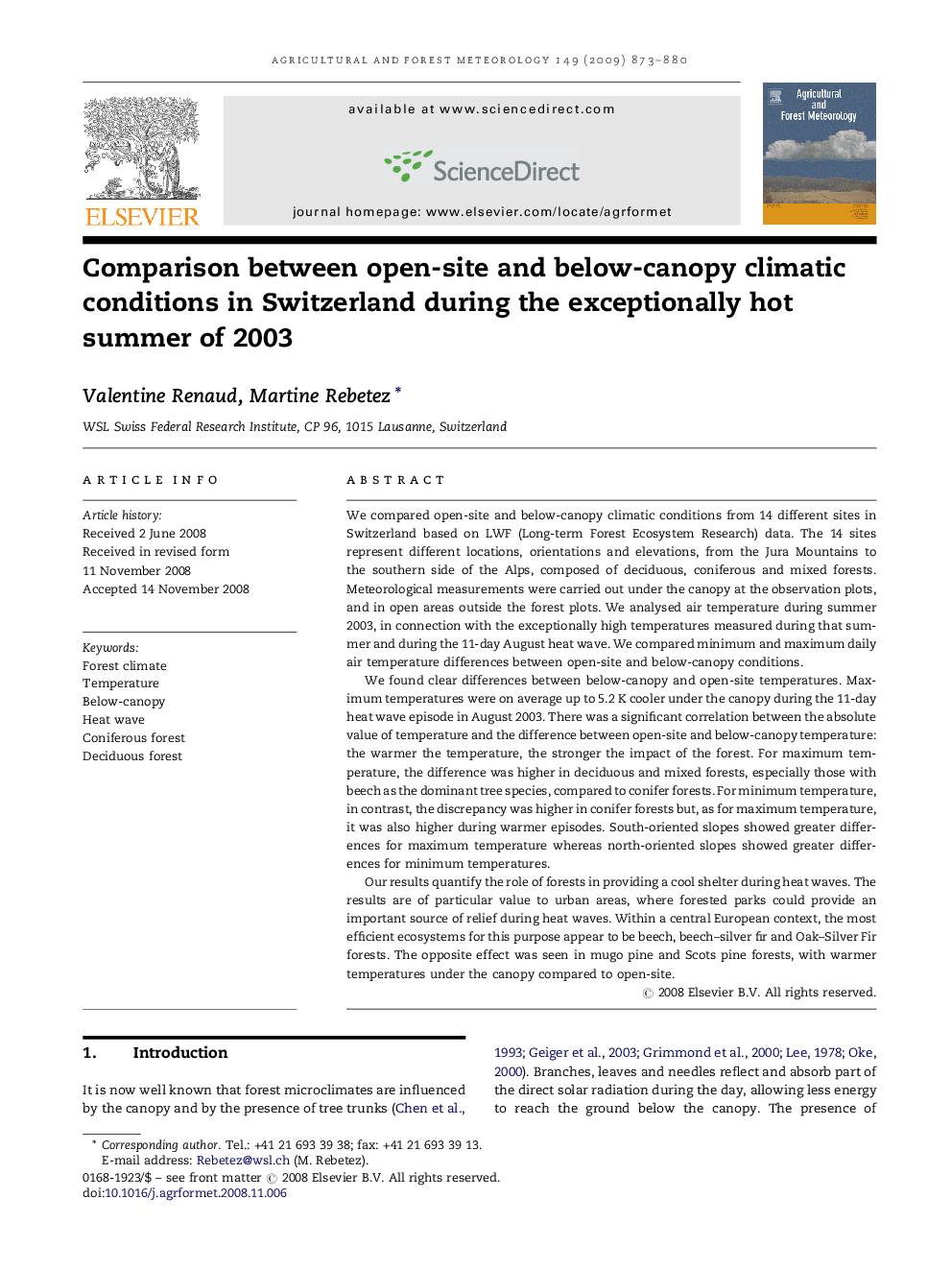| کد مقاله | کد نشریه | سال انتشار | مقاله انگلیسی | نسخه تمام متن |
|---|---|---|---|---|
| 82706 | 158410 | 2009 | 8 صفحه PDF | دانلود رایگان |

We compared open-site and below-canopy climatic conditions from 14 different sites in Switzerland based on LWF (Long-term Forest Ecosystem Research) data. The 14 sites represent different locations, orientations and elevations, from the Jura Mountains to the southern side of the Alps, composed of deciduous, coniferous and mixed forests. Meteorological measurements were carried out under the canopy at the observation plots, and in open areas outside the forest plots. We analysed air temperature during summer 2003, in connection with the exceptionally high temperatures measured during that summer and during the 11-day August heat wave. We compared minimum and maximum daily air temperature differences between open-site and below-canopy conditions.We found clear differences between below-canopy and open-site temperatures. Maximum temperatures were on average up to 5.2 K cooler under the canopy during the 11-day heat wave episode in August 2003. There was a significant correlation between the absolute value of temperature and the difference between open-site and below-canopy temperature: the warmer the temperature, the stronger the impact of the forest. For maximum temperature, the difference was higher in deciduous and mixed forests, especially those with beech as the dominant tree species, compared to conifer forests. For minimum temperature, in contrast, the discrepancy was higher in conifer forests but, as for maximum temperature, it was also higher during warmer episodes. South-oriented slopes showed greater differences for maximum temperature whereas north-oriented slopes showed greater differences for minimum temperatures.Our results quantify the role of forests in providing a cool shelter during heat waves. The results are of particular value to urban areas, where forested parks could provide an important source of relief during heat waves. Within a central European context, the most efficient ecosystems for this purpose appear to be beech, beech–silver fir and Oak–Silver Fir forests. The opposite effect was seen in mugo pine and Scots pine forests, with warmer temperatures under the canopy compared to open-site.
Journal: Agricultural and Forest Meteorology - Volume 149, Issue 5, 7 May 2009, Pages 873–880